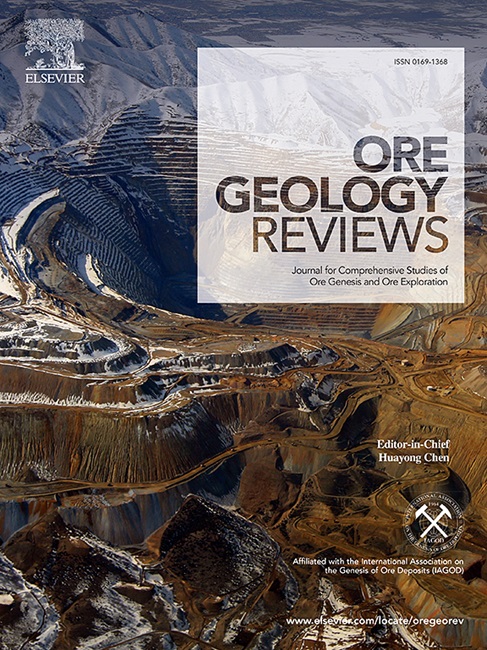Trace element characteristics of magnetite from the Litun skarn iron deposits in eastern China and its Significance
IF 3.2
2区 地球科学
Q1 GEOLOGY
引用次数: 0
Abstract
The Litun deposit, a recently discovered skarn Fe deposit in eastern China, is hosted within Carboniferous mudstone-detrital rocks and exhibits distinctive mineralization characteristics. This study presents a systematic in-situ trace element analysis of magnetite from the Litun deposit. The Liutun deposit has undergone intense hydrothermal alteration, which can be divided into four stages: skarn (stage I), oxide (stage II), sulfide (stage III), and carbonate (stage IV). Magnetite primarily formed during stage II, co-existing with tremolite, chlorite, epidote, and phlogopite. The analysis reveals that most samples formed under medium to low temperature conditions (Ti + V<1000 ppm). The concentrations of Mg, Al, and Si in magnetite are strongly influenced by coexisting minerals (tremolite, chlorite, epidote). Within the same drill hole, magnetite proximal to the wall rock commonly exhibits higher Ti and V contents, suggesting that the mineralizing fluid underwent replacement from both deep and shallow sides towards the central part. During the replacement process, the (Si + Al)/(Mg + Mn) ratio range increases, indicating that non-carbonate strata are unable to effectively buffer the fluctuations in fluid composition during mineralization. Most of the analysis points fall in the skarn region in the discriminant diagram. Combined with previous δ34S of pyrite studies, it is inferred that the mineralizing fluid was likely mixed with deep Ordovician marine sedimentary strata. This study demonstrates the significant indicative value of magnetite trace elements for identifying deep-seated hidden carbonate formations. The interface between non-carbonate and carbonate lithologies, particularly when associated with diorite intrusions, represents a promising exploration target for “Litun-type” skarn Fe deposits.

求助全文
约1分钟内获得全文
求助全文
来源期刊

Ore Geology Reviews
地学-地质学
CiteScore
6.50
自引率
27.30%
发文量
546
审稿时长
22.9 weeks
期刊介绍:
Ore Geology Reviews aims to familiarize all earth scientists with recent advances in a number of interconnected disciplines related to the study of, and search for, ore deposits. The reviews range from brief to longer contributions, but the journal preferentially publishes manuscripts that fill the niche between the commonly shorter journal articles and the comprehensive book coverages, and thus has a special appeal to many authors and readers.
 求助内容:
求助内容: 应助结果提醒方式:
应助结果提醒方式:


